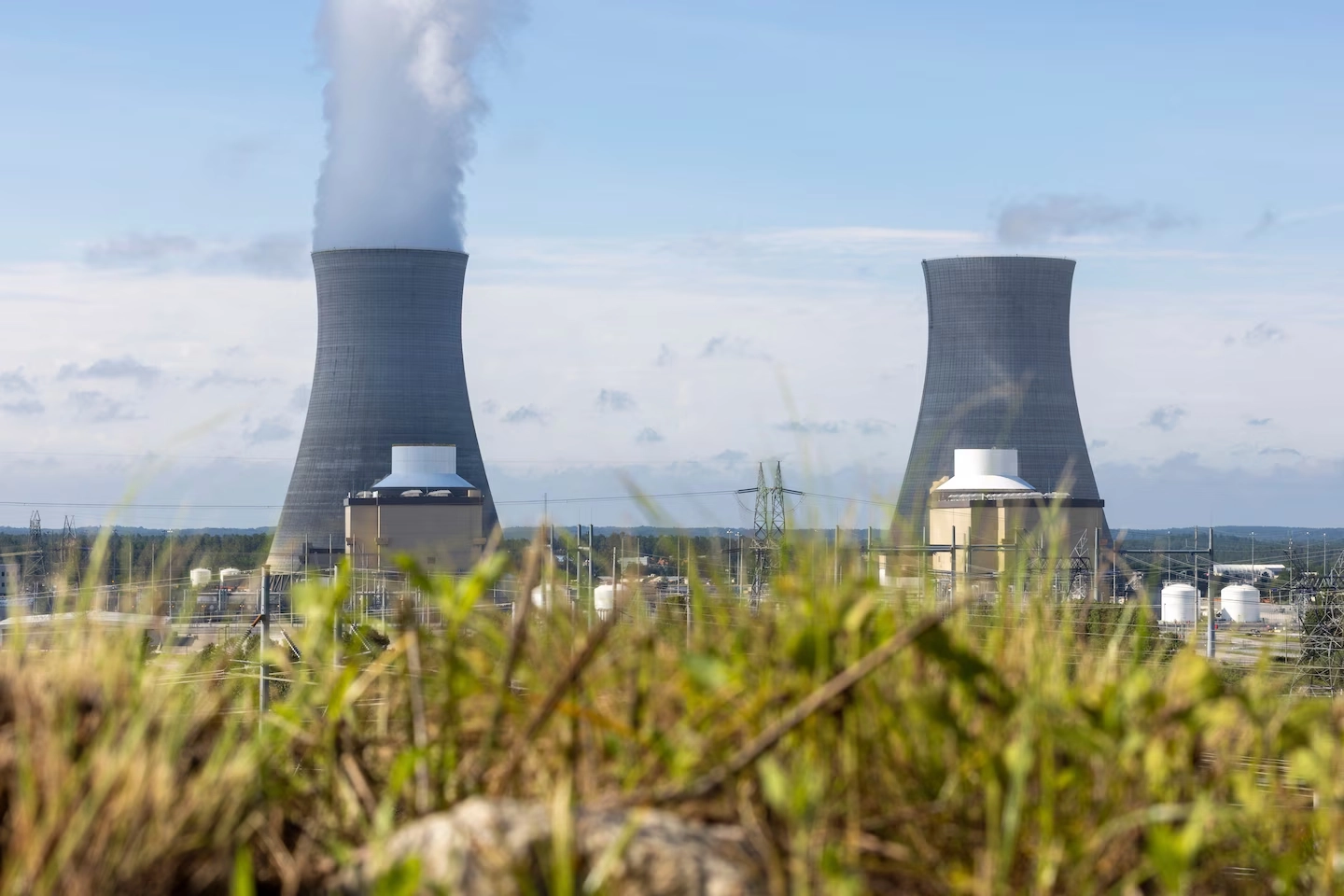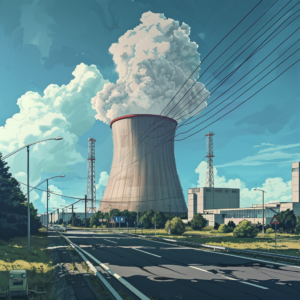
Are our idling VMs to blame? Well, probably not the idling ones but maybe all those systems you’re using to mine crypto, power game servers, and serve web apps.
The United States faces potential widespread power shortages as the demand for electricity skyrockets due to the proliferation of data centers and clean-technology factories. This development leaves utilities and regulators scrambling for reliable solutions to bolster the country’s aging power grid.
Georgia sees a surge in industrial power demand, reaching unprecedented highs. The state’s electricity use projection for the next decade is 17 times higher than its recent records. In Arizona, the largest utility, Arizona Public Service, struggles to meet the increasing electrical needs, forecasting that it will exhaust its transmission capacity by the decade’s end unless significant upgrades are implemented.
Northern Virginia requires additional power equivalent to several large nuclear power plants to support all the data centers in planning and under construction stages. Texas already deals with routine electricity shortages during the sizzling summer days and is also faced with a similar conundrum.
The increasing demand is sparking a rush to try and extract more power from an old grid, and it’s encouraging businesses to make unusual moves to secure energy resources, such as creating their own power stations.
 Jason Shaw, the chair of the Georgia Public Service Commission which oversees electricity, commented, “The figures are astounding. It’s baffling how we ended up here. How could the predictions be too far off? This situation presents a challenge we haven’t encountered before.”
Jason Shaw, the chair of the Georgia Public Service Commission which oversees electricity, commented, “The figures are astounding. It’s baffling how we ended up here. How could the predictions be too far off? This situation presents a challenge we haven’t encountered before.”
A significant reason for the surge in demand is the swift advancement in artificial intelligence. This is triggering the development of immense server farms which consume considerably more power than typical data centers. AI also contributes to the massive expansion of cloud computing. Tech companies such as Amazon, Apple, Google, Meta and Microsoft are searching across the country for locations for new data centers. Many less famous firms are also searching.
Crypto-mining, where cryptocurrencies like bitcoin are bought and produced, is another factor contributing to the growth of data centers. This is adding stress to an overstretched grid – the infrastructure of transmission lines and power stations that distribute electricity nationwide. Both new energy generators, especially clean energy, and large power consumers are facing increasing delays for connections due to rising bottlenecks.
The issue is causing nationwide disputes about who will foot the bill for new power resources. Regulators are concerned that the expenses for high-cost upgrades could be passed onto household customers. This issue could potentially delay the transition towards greener power sources as energy companies advocate for delaying decommissioning of fossil fuel plants and introducing more of such facilities. The energy shortage further risks limiting their capacity to provide the required power for charging countless electric vehicles and running numerous home appliances necessary to fulfill the climate objectives set by state authorities and the federal government.
As per the International Energy Agency, the 2,700 data centres across the country consumed more than 4% of the total national electricity in 2022. Their predictions suggest that by 2026, this value will reach 6%. Industry predictions indicate an increasing consumption of electricity by these centres in the coming years, while the demand from homes and smaller businesses is expected to remain rather constant due to enhanced efficiencies in appliances and heating/cooling systems.
 Data centre providers are concurrently striving to connect to regional electricity networks as the industrial policies of the Biden administration attract companies to establish factories in the United States at the highest rate observed in decades. This list of companies include those involved in “clean tech” production such as solar panels and electric car batteries who are being incentivised by appealing federal packages. During the first half of the Biden administration’s tenure, companies announced their intentions to establish or expand more than 155 factories in the country, as per the Electric Power Research Institute, an industry-focused think tank. Contribution of factory building to the total US construction spending has not been this significant since the early ’90s, according to the institute’s findings.
Data centre providers are concurrently striving to connect to regional electricity networks as the industrial policies of the Biden administration attract companies to establish factories in the United States at the highest rate observed in decades. This list of companies include those involved in “clean tech” production such as solar panels and electric car batteries who are being incentivised by appealing federal packages. During the first half of the Biden administration’s tenure, companies announced their intentions to establish or expand more than 155 factories in the country, as per the Electric Power Research Institute, an industry-focused think tank. Contribution of factory building to the total US construction spending has not been this significant since the early ’90s, according to the institute’s findings.
As per regulatory filings evaluated by research organisation Grid Strategies, energy companies’ estimations for their power requirements over the next five years have almost doubled and are expected to rise further.
Data centers have traditionally been situated in locations with significant internet infrastructure, a large reservoir of tech professionals, and attractive governmental perks. However, these popular spots are now being depleted rapidly.
Rural communities that had previously been unconnected to the tech industry, now find themselves entwined in a property boom. Developers of data centers are inundating these regions with requests for connections to their power grid. Public officials in places like Columbus, Ohio; Altoona, Iowa, and Fort Wayne, Indiana, are being vigorously pursued by these developers. According to JLL, a commercial real estate firm that specializes in tech industry services, the power supply in these non-primary markets is dwindling fast, driving developers further into the outskirts and, in some instances, into unoccupied farmland.
Grid Strategies cautions in their report that there are potential risks that some areas might miss out on income development opportunities if their grid cannot keep up with the demand.
“Wide-ranging power companies are expressing their doubts, stating, ‘We don’t know if we can handle this demand; we must reassess our capacity; we’ve never been inundated this way before,’” said Andy Cvengros, managing director of data center markets at JLL. “Power is now what everyone is seeking. They are ready to search everywhere to find it.”
Amazon is planning to construct a data center on property it has purchased in Warrenton, Va.
“Land values in certain regions of Columbus have quadrupled, and there has been a tripling in parts of Chicago,” was observed. “It’s not just about the land, but about access to power.” It was also reported that certain developers who purchased property at high prices had to resell at a loss when the rush for grid connections led to overloading of utilities.
This is occurring while large numbers of Americans are turning to the power grid to power vehicles, heat pumps, induction stoves, and a range of other household appliances that previously ran on fossil fuels. There’s a need for a significant amount of clean energy to produce the green hydrogen that the White House is promoting. This is causing developers to scramble to construct plants capable of producing the potent zero-emissions fuel, motivated by generous federal subsidies.
There is mounting concern among planners that the grid may not be green enough or powerful enough to meet these requirements.
The escalating energy usage is now stalling the shuttering of coal facilities in Kansas, Nebraska, Wisconsin and South Carolina.
The major energy firm in Georgia, Georgia Power, recently shocked regulators with the revelation of just how far off its predictions were; data centers were identified as the primary factor.
This increasing demand has prompted Georgia authorities to re-evaluate their strategy of providing incentives to attract computing facilities, which may not create many jobs but can significantly contribute to community budgets with their large property tax payments. A temporary halt to data center incentives is being proposed by the state’s top House and Senate leaders, who are both from the Republican party.
Regulators in Georgia are concurrently examining ways to safeguard ratepayers while guaranteeing sufficient electricity availability for their most valued new occupants: companies focusing on clean technology. Electric vehicle and green-energy factories have been eager to establish themselves in Georgia, largely due to promises of affordable and dependable electricity.
When the search for new data center hubs began, Pat Lynch, head of the Data Center Solutions at CBRE, stated, “Atlanta welcomed it with open arms. However, Georgia Power is now warning about potential limitations… Almost every market is experiencing utility shortages due to the demands of these data centers.”
The need to balance between protecting ratepayers and ensuring enough power for Georgia’s new high-valued tenants – clean-tech companies, has been tasked to Georgia regulators.
Another region experiencing a similar situation is the Pacific Northwest. In Oregon, Portland General Electric has recently doubled its demand forecast for new electricity in the next five years. The forecast cites the development of data centers and quick industrial growth as the causes of this increase.
This power crunch has impacted the plans of Michael Halaburda and Arman Khalili, seasoned data center developers. Their latest venture is transforming an unused tile factory in Portland. A couple of months ago, they assumed electricity supply would not be an issue for their operation. However, the power company informed them that a “line and load study” is needed to see if it could provide the facility with 60 megawatts of electricity – an amount equivalent to the power consumed by 45,000 homes.
The development project in Portland, undertaken by Halaburda and Khalili, will now largely utilize off-grid, advanced fuel cells that transform natural gas into low-emission electricity. This setup will be boosted by any obtainable power from the grid. The duo has chosen to eliminate their dependence on the grid entirely for their forthcoming venture in South Texas. Instead, they will resort to drilling deep into the earth to harness geothermal energy.
According to Halaburda, this expansion is beneficial for both the nation and its economy. He asserts, “A lack of comprehensive planning for future growth may lead to an adverse situation. If there is no serious effort directed towards the enhancement and fortification of the grid in the ensuing years, certain opportunities might go unexploited due to our inability to provide the required power distribution.”
Several companies are progressively experimenting with off-grid alternatives as their dissatisfaction with the current bottleneck in the nation’s primary electrical grid escalates. Among these firms, Microsoft and Google are laying their hopes on powering energy-intensive industrial machinery through site-specific miniature nuclear plants. Microsoft is even employing AI to simplify the cumbersome procedure of plant approvals. Moreover, it has signed an agreement to buy power from a firm attempting to generate zero-emission fusion energy. However, venturing off-grid has its fair share of significant regulatory and land-acquiring concerns. Of note, the kind of nuclear facilities envisaged are not presently operational in the United States. As of now, fusion power is still in development and not yet a reality.
The bitcoin-mining installation by Cormint Data Systems is located in Fort Stockton, Texas.
Major tech firms are venturing into the utilization of AI for more efficient grid operations. These companies are creating systems which, in times of high power demand, are able to relocate computing tasks and their related energy use to periods and locations where the grid has an availability of carbon-free energy. This strategy is according to Google. However, the balance between their zero-emissions commitments and AI innovation aspirations is becoming increasingly challenging with the rising energy necessities of their data centers.
Michael Ortiz, CEO of Layer 9 Data Centers, a company in the U.S. seeking to bypass the bottleneck by establishing in Mexico, stated, “These problems are not disappearing. Data centers will need to be more efficient, and we should be tapping into more renewable, efficient energy sources, like nuclear.”
Equinix, one of the globe’s largest data center firms, claimed they’ve been testing fuel cells for backup power. Yet, they are optimistic about maintaining the power grid as their principal source of electricity for future endeavours.
The bottleneck is already compelling officials in charge of the clean-energy transition at numerous major airports nationwide to consider alternatives to the grid. The energy requirement for charging electric rental vehicles and ground maintenance trucks alone is considerable. A study reveals that the electric demand at both Denver and Minneapolis airports is projected to double by 2030. The research, commissioned by car rental behemoth Enterprise, Xcel Energy, and consulting firm Jacobs, forecasts that by 2040, they will require over thrice the electricity they are currently utilizing.
Christine Weydig, vice president of transportation at AlphaStruxure, asserts that utilities may not have the nimbleness required to provide the necessary capacity fast enough. She highlights concerns about lacking infrastructure and posits that varied remedies will be essential. Weydig also notes that airports are contemplating the wide-scale augmentation of on-site built clean-power “microgrids.”
The Biden administration has identified grid bottleneck alleviation as a key objective. Nevertheless, this is a politically contentious issue and federal powers are circumscribed. Creating the required transfer stations and transmission lines involve exhaustive environmental reviews, significant land procurement, and intricate negotiations about cost-sharing.
The said process intersects with state regulatory bodies. Inter-state disputes regarding responsibility for costs and the location of power lines recurrently hinder and delay prospective projects. There has been a marked drop in new transmission line installation in the U.S. since 2013. Currently, the country finds it challenging to commission even 1,000 new miles annually. The group of scientists spearheaded by Professor Jesse Jenkins from Princeton University cautions in a report that 80 percent of potential emission reductions, resulting from President Biden’s Inflation Reduction Act, could be squandered by 2030 if the current transmission construction rate doesn’t surge.
Although the surge in data centers places additional demands on states to sanction new transmission lines, it also complicates the task. For instance, Maryland officials are contesting a $5.2 billion infrastructure proposal meant to supply power to major data centers in Loudoun County, Virginia. The Maryland Office of People’s Council, an agency advocating for ratepayers, has labeled grid operator PJM’s proposal as “inherently unfair.” They argue it could potentially burden Maryland utility consumers with the cost of power transmission to data centers. These data centers were vigorously sought after by Virginia, providing the state with a tax revenue boost.
Microsoft and Amazon data centers, nestled near a residential area, occupy what was once farmland in Northern Virginia.
The stress over who gets electrical supply from the grid as well as its distribution will augment as supplies dwindle.
In the state of Texas, the rise in data centers for crypto mining has kindled discussions if they pose an expensive burden on an overstretched power grid. As per the analysis by consulting firm Wood Mackenzie, the power requisite for crypto functions that aim to integrate with the grid would equate to a quarter of the electricity consumed in the state during peak demand. Unlike data facilities managed by large tech corporations like Google and Meta, crypto miners generally refrain from establishing renewable-energy projects with a goal to feed their operations with enough zero-emissions energy to the grid.
Ben Hertz-Shargel, the author of the Wood Mackenzie research, noted that crypto’s consumption of grid resources potentially hinders Texas’s capacity to support other energy-consuming activities that could spur innovation and economic growth. For instance, factories manufacturing zero-emissions green hydrogen fuel or industrial charging stations for electrifying bus and truck fleets.
For many years, the accessibility of power hasn’t been an issue, but regulators and utility leaders nationwide are generally not authorized to decide which projects receive power priorities. It’s based on a first-come, first-served system, and the queue is getting longer. To address this, some states have enacted laws to secure crypto mining’s access to massive power quantities.
“Lawmakers must consider this,” stated Hertz-Shargel, referring to the allocation of an increasingly scarce power supply. “Strategic industries that they desire to establish in their states may experience difficulties setting up in those regions.”
LowEndBox is a go-to resource for those seeking budget-friendly hosting solutions. This editorial focuses on syndicated news articles, delivering timely information and insights about web hosting, technology, and internet services that cater specifically to the LowEndBox community. With a wide range of topics covered, it serves as a comprehensive source of up-to-date content, helping users stay informed about the rapidly changing landscape of affordable hosting solutions.
























Nice article
It brings me great joy to view your site today. You did a great job writing that. It gave me the impression that such concepts could still be found in the original text and that new interpretations may be made of it in the future. How could someone so great not be someone to learn from? You are worthy.